Discovery: Fraktur of Anna Elizabeth Hagenbuch
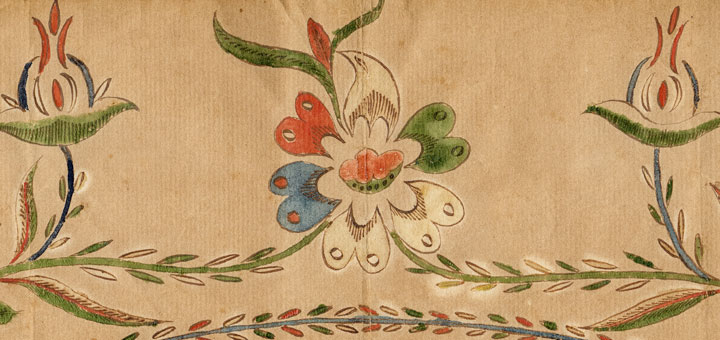
Recently, an artifact of Hagenbuch history was discovered and returned to the family. This was the birth and baptismal Fraktur of Anna Elizabeth Hagenbuch (b. 1754, d. 1825). More accurately termed a Taufschein, only one other is known to exist in the family: the Taufschein for Charles Hagenbuch (b. 1811, d. 1870). It was sold to a private collector in 2010.
For the Hagenbuchs and other Pennsylvania Deitsch, Taufscheine were important family documents. Often beautifully decorated in the Fraktur style, they commemorated the births and baptisms of children. Interestingly, unlike modern birth certificates, it was not uncommon for Taufsheine to be made for family members after they were adults.
Anna Elizabeth Hagenbuch was the daughter of Andreas Hagenbuch (b. 1711, d. 1785) and his third wife, Maria Margaretha Friedler. She was born on April 27, 1754 at the Hagenbuch homestead in Berks County, Albany Township, Pennsylvania. Around the year 1774, she married John Adam Reichelderfer (b. 1741, d. 1810), who went on to serve in the Revolutionary War as a private in Captain Ritter’s Company.
John was the son of Frederick Reichelderfer (b. 1715, d. 1759) and his wife, Christina. They were neighbors of the Hagenbuchs and close with the family. This has been noted in Frederick’s will where he asks Andreas to care for Christina and their children upon his death.
In 1785, when her father Andreas died, Anna Elizabeth was willed 100 pounds and a share of the household’s white linen goods. She and her husband, John, would go on to raise a large family of 12 children. In 1806, they moved to Salt Creek, Pickaway County, Ohio. Anna Elizabeth died on August 24, 1825 and is buried in Stumpf Cemetery, Pickaway County, Ohio. Several of their descendants still live in this area.
The story of how my father, Mark Hagenbuch, and I came to acquire Anna Elizabeth Hagenbuch’s Taufschein begins in late February of this year. A friend of my father’s and fellow Pennsylvania Deitsch enthusiast, Chris Witmer, found it listed on eBay along with other Fraktur art. The document was described as being for “Elizabeth Hagenbing (sic) of Albany Township, Leeds County, Pennsylvania.” Chris deduced that “Hagenbing” must be “Hagenbuch” and contacted us about it.
Initially, we found it difficult to believe this Taufschein was real. It was beautifully done in the Fraktur style with brilliant colors that were hardly faded by time. We estimated that the document must be at least 200 years old. Perhaps it was a forgery? As the time on the auction counted down, we consulted with Chris and several other experts.
Eventually, we cautiously agreed that the Fraktur must be real, though it did have a couple of oddities that gave us pause. First, Anna Elizabeth was listed simply as Elizabeth. Perhaps because she had sisters named Anna Margaretha and Anna Barbara they each went by their middle names? Second, the calligraphy on the document was difficult to read in places. To modern eyes “Hagenbuch” did look like “Hagenbing” and “Berks County” could be read as “Leeds County.” (There is no Leeds County in Pennsylvania). We decided this confusion was simply the unique style of the calligrapher.
A few days before the eBay auction for the Taufschein ended, we placed our first bid. We were quickly outbid, so we bid again and once again. Soon, we were the highest bidder. Then we waited. We expected the bidding in the last few hours of the auction to be fierce. This was a fine example of Pennsylvania Deitsch Fraktur art after all, and as we knew from Charles Hagenbuch’s Taufschein, collectors will pay sizable amounts to own such pieces. Nevertheless, we wanted this document returned to the family!
During the final hour of the auction, my wife Sara and I were grocery shopping. With the car parked, I pulled out my phone, opened the eBay app, and checked how it was going. We were still winning, but the chance of being outbid was high. There we sat in the car watching the phone’s screen and counting down the last few seconds: 3… 2… 1… we had won it!
The seller quickly shipped the Taufschein to my father in Pennsylvania, returning it to the state where Anna Elizabeth Hagenbuch had been born over 250 years prior. According to the seller, he had purchased the document at an estate auction in Williamstown, West Virginia. Interestingly, this town is only 100 miles from were Anna Elizabeth is buried, leading us to wonder if this had been the estate sale of a distant relative.
My father and I were delighted to receive the Taufschein and to see it back with the Hagenbuch family. We agreed that the next step was to ensure it was properly preserved for future generations. My father contacted an expert in document conservation and Fraktur art. Currently, the document is with this person being studied, researched, and cared for.
Over the next few months, we will report on the status and findings of the conservation effort surrounding the Taufschein of Anna Elizabeth Hagenbuch. Stay tuned for several more articles in this series.

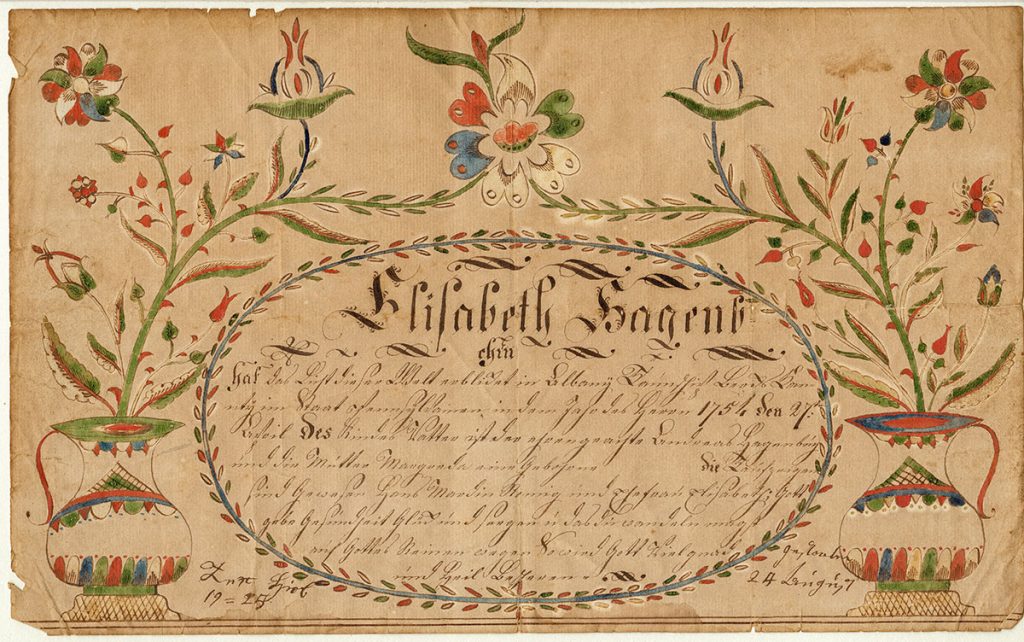
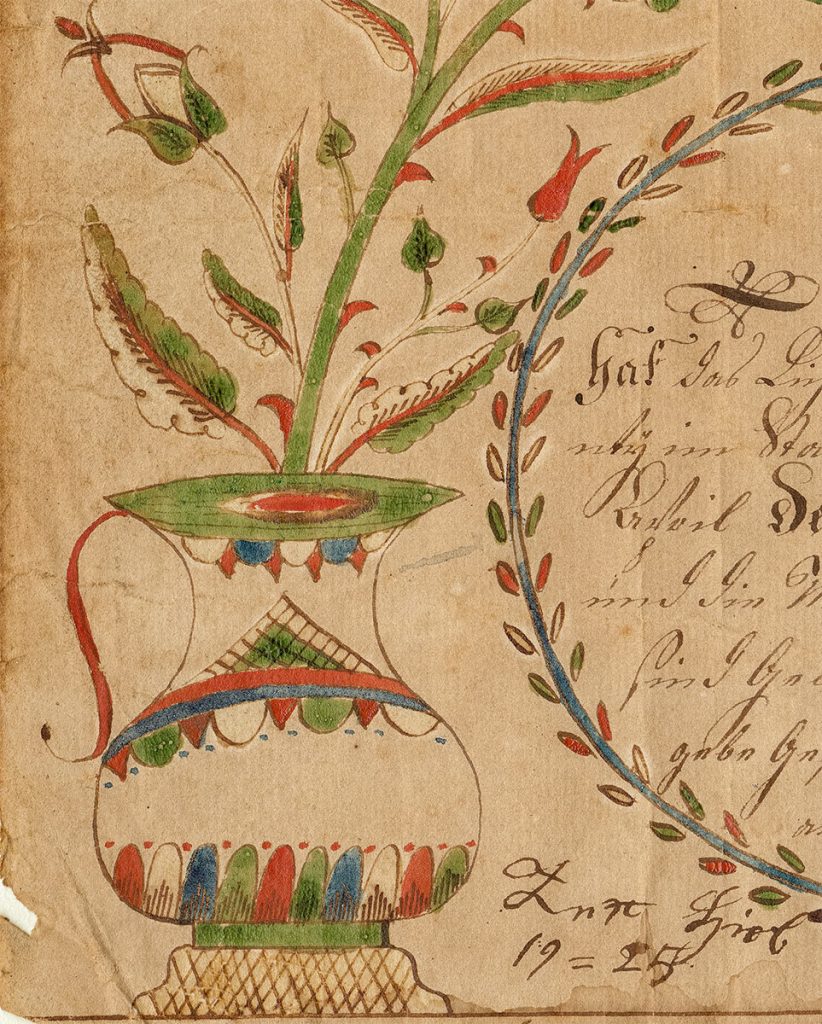
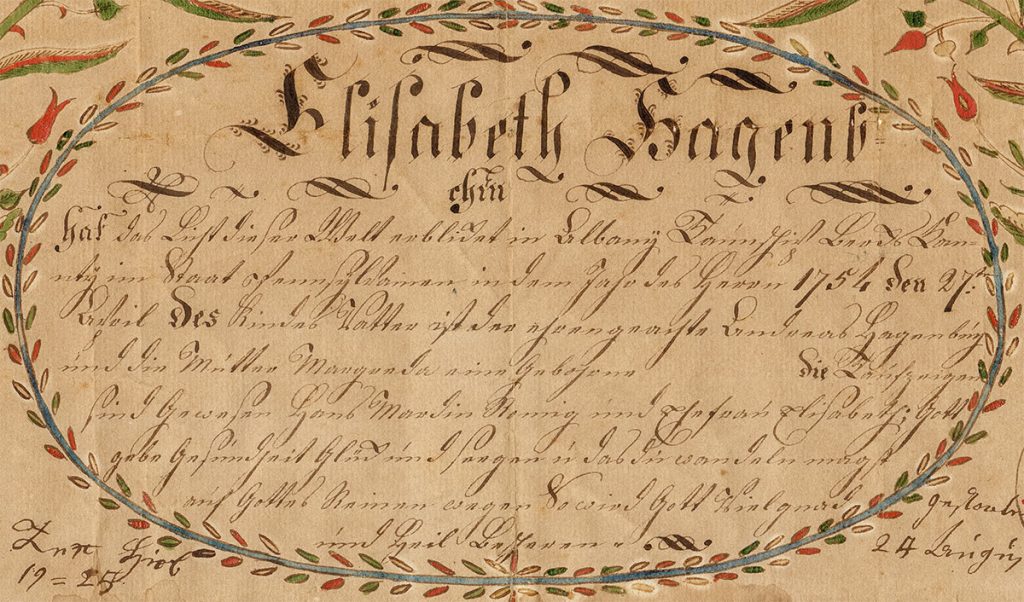

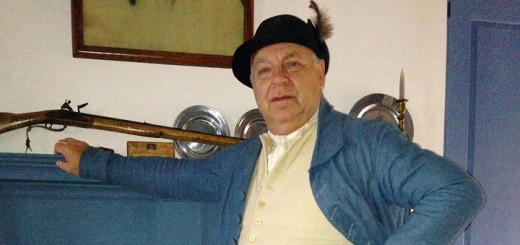
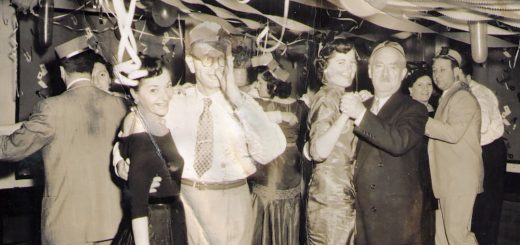
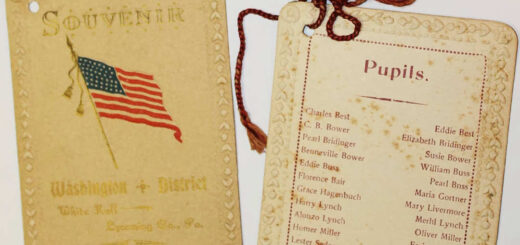














Hello,
What a beautiful example. Hagenbuchin includes the feminine ending to Hagenbuch. We see it on Taufscheine wherein the scrivener or artist writes the mother’s maiden name. Hagenbuch will be recorded Hagenbuchin. My name, Ernst would have been recorded as Ernstin, (sometimes en is seen also), Braun would have been recorded as Braunin and etc. Re: the “first” name. Pennsylvania Germans used “spirit” names, a favorite name in the family, as a first name. Johannes and Maria are the most common, but your family clearly liked Anna. The name the child actually used was the second name. Your ancestors would have been referred to as Elizabeth, Margaretha, and Barbara about the house. I hope this helps.
Ann Elizabeth is my fifth great grandmother. Her daughter, Maria, my fourth great grandmother, and Maria’s daughter Catherine Braucher is my third great grandmother.